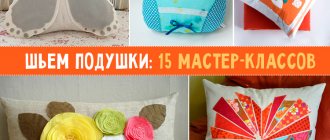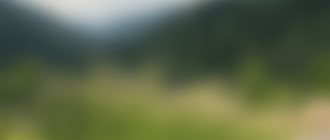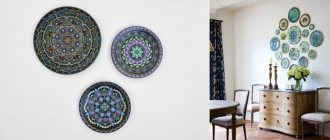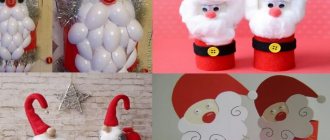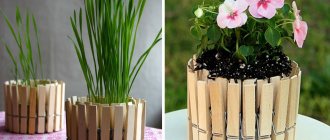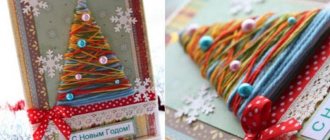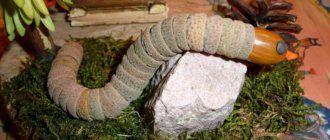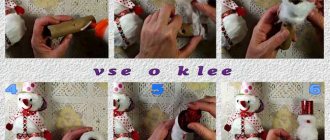A person cannot do without bed linen. For pillowcases, sheets, and duvet covers, do not make patterns on paper. The drawing is made directly on the fabric. And questions about how to sew a pillowcase from a single piece of fabric or make it from scraps in a patchwork style rarely arise. Any, even the most inexperienced needlewoman can cope with this task - no complicated work with creating a pattern is required! Cutting squares/rectangles from fabric is easy.
This type of bed linen can be made of any type: with buttons, zippers, or wraparound. You can verify the above and try sewing a pillowcase yourself by using the instructions in this article.
A pillowcase is easy to sew; even a novice needlewoman can handle this job.
Necessary materials
Before sewing a pillowcase, you need to prepare the following materials.
- Fabrics. Satin and calico are more suitable for this purpose; you can use silk, chintz, etc., which are selected, selected scraps.
- Sewing machine.
- Threads matching color and texture.
- Tape measure.
- Pencil, chalk for drawing lines.
- Scissors and pins used to secure pieces of fabric.
- Other accessories, if needed.
- Calculation of fabric consumption for the simplest type of pillowcase.
You need to take the calculated amount of consumables plus 5%. For a pillow 50 x 50 cm, you need 1 m plus 5 cm. If the pillowcase is sewn with a wrap, then you need to add fabric for the wrap.
When calculating the required cut of fabric, we take into account the dimensions of the pillowcase itself, the scent and seam allowances
It should be remembered that when selling in stores, the material is cut unevenly or even torn, which sometimes bends it. Therefore, experienced craftswomen take about 10-20 cm more than the planned amount.
Now you should understand the instructions for sewing this element of bed linen.
Choosing fabric for pillowcases
If the pillowcase will be used as bed linen, you should take cotton, breathable fabrics - calico, satin, chintz, flannel, flannel. If the purpose is a decorative cover, linen, cambric, silk, satin, and wool are suitable.
Pros and cons of materials:
- cotton - affordable, easy to wash, easy to iron, strong, durable, but after repeated washing the color fades;
- satin - durable, wear-resistant, smooth surface is pleasant to the skin, does not fade for a long time, is easy to care for, does not deform from regular washing, an ideal fabric for bed linen;
- linen – has a “cooling” effect, good for decorative pillows for a summer sofa in the country, where it’s nice to take a nap in the air during the day in the heat, but it wrinkles a lot;
- silk – looks beautiful when worn, but quickly loses its appearance when machine washed, so it is recommended for pillows that serve only as decoration and not as bedding;
- cambric is an elegant material for decorative pillows, you won’t be able to sleep on such pillowcases - it quickly loses its appearance from washing and becomes thinner;
- wool is useful as a pillow cover in the cold season, it provides dry warmth; it is useful to rest on a pillow with such a cover for colds and joint pain.
Designers recommend covering pillows with soft filling in pillowcases made of thin fabrics to make it comfortable to rest - they will easily follow the shape of the head and neck, and with hard filling - in covers made of dense fabric. Examples: satin is suitable for an orthopedic pillow made of bamboo fiber; chintz is suitable for a pillow stuffed with feathers and down.
How to calculate fabric footage
Plain materials and with small patterns are taken with a margin for seam allowances. If the fabric has a large print (flowers, geometric shapes, toys, cartoon characters, etc.), you need to take into account that the images must match at the joints and fit completely on each of the two sides of the pillow.
It won’t be aesthetically pleasing if in the corner of Winnie the Pooh’s face there is only half a nose and one eye, and the flower has only one stem sticking out.
Pillowcase with “ears”, master class
Pillowcases with “ears”
It would be more correct to call these beautiful covers Oxford (“with borders”). The rules for sewing them are no more complicated than usual, with a smell. In this case, the material consumption is a little more.
We cut out the details for our double-sided pillow with ears
We process the cuts of the back parts, turn the side by 2.5 cm and iron
Usually a product is sewn for a double set, where fabric with a width of at least 220 cm is used. Before sewing, the necessary rectangles are cut out.
Fold in another 2.5 cm, iron and pin
We sew the folded parts on the machine, retreating 3 mm from the edge
First, the short edges are processed with a double hem. The edge is folded in about 1 cm and smoothed. Fold up about 2 cm more and iron.
We place one of the front parts wrong side down, and place the back parts face down on top, aligning the cuts.
We cut along the perimeter and stitch, retreating 1 cm
The product is stitched along the edge. If desired, you can leave the edge where the zipper will be. Then a double seam is made, the width of which is 5 cm.
We cut the corners and turn the pillowcase inside out, straighten it and iron it
To avoid displacement when sewing “ears”, we chop off the layers of fabric with pins
The cover is turned inside out and ironed over the scar. Take a ruler, draw straight lines with chalk, spaced 5 cm from the edge along the perimeter of the canvas, and stitch it. The pillowcase with “ears” is ready.
Using a disappearing fabric marker, draw the borders of the pillowcase, and sew it on the machine.
Ready-made double-sided pillowcase with zipper and “ears”
If there is not enough fabric, you can sew a cover with a zipper. In this case, a running machine stitch is made where the fastener will be. Then the fabric is unrolled and smoothed so that the material lies evenly along the scars. The zipper is placed on top of the hem with the zipper down, half open. The line of teeth should lie strictly along the running seam. A zipper foot is installed on the machine and carefully stitched. Then, through the half-open clasp, the product is turned inside out.
Unusual decorative pillows: 10 ideas with instructions
Pillow decorated with silhouette profile
A simple plain pillowcase for a decorative pillow can be decorated with such a silhouette profile by applying a design using fabric paint or gluing an applique.
Photo: dearlillieblog.blogspot.com
Pillowcases for decorative pillows - do it yourself: 7 master classes
Pillow decorated with pompom braid
Typically, this braid is used to decorate pillowcases around the edges of decorative pillows. This method looks more unusual, but no less cute: the braid is sewn across the pillow in two rows.
Photo: theinspiredroom.net
Decorative pyramid pillows: master class
Pretzel pillow
Making this DIY pretzel pillow is easier than it looks. You need to sew a tube of sufficient length from knitwear, fill it with synthetic fluff or holofiber. Add decor from pieces of felt and tie the resulting sausage into a pretzel.
Photo: studiodiy.com
Pillow made from an old sweater with cross stitch: master class
Donut pillow
Another “delicious” pillow is in the shape of a donut. It is made of fleece in two colors, and the “donut” jelly bean is made of felt.
Photo: abeautifulmess.com
Pillowcase with curly folds for a decorative pillow: master class
Pillow in the form of macaroon cookies
Another confectionery product embodied in the form of a pillow: French macarons, or macarons. These can be made from plain or plush fleece. First, the side strip is sewn, then it needs to be sewn to the round parts and the pillow must be stuffed with filler.
Photo: camelotfabricsblog.com
Case with voluminous “bombs” for a decorative pillow: master class
Decorative pillow strewn with roses
Option in a romantic style: a pillow completely strewn with roses. The roses are made of felt and sewn onto a smooth pillowcase.
Photo: mama-says-sew.blogspot.com
Transformable pillow: master class
Decorative pillow with rosette
Another pillow with an unusual texture. It looks very interesting, but is quite simple to make: in fact, this is the same rose as on the pillow above, but very large. The material (it is better so that its edges do not fray too much) should be cut into long strips and folded into a rosette on a pillowcase, gluing it with hot glue.
Photo: thriftyandchic.com
How to sew a cushion for a sofa in the shape of an ottoman
Pillow with a knot in the middle
To make such a pillowcase for a decorative pillow, cut out the piece on the outside of the pillowcase larger than the back piece (in this case, 86x86 cm and 60x60 cm, respectively). Form and sew a knot on the outer part in the center. Then pin the pieces together (the outer side piece forms the pleats) and sew like a regular pillow.
Photo: thegildedhare.blogspot.com
Transforming a shirt into a pillowcase for a decorative pillow
Pillow toy
This pillow will primarily please children. It can be made in the shape of a muzzle, for example, a dog. Add details of the muzzle and ears to the oval base.
Photo: crafts.tutsplus.com
We sew a kitten pillow for a children's room
Pillow in the shape of a cactus (or other unusual shape)
In fact, the shape can be any - plant, animal, flower, letter, and so on. There is only one technology: we draw a sketch and, based on it, a pattern (if additional volume is needed, it is worth adding a side part). Having cut out the parts, we determine whether the decor needs to be sewn on first - for example, if an applique is planned, it is better to do it before sewing the main parts. Thread decor like the one on this cactus can be added after sewing the parts together and stuffing them with filler.
Photo: everythingemilyblog.com
Pillowcases for round sofa cushions
In addition to pillows that are used for sleeping, there are often decorative sofas in the apartment. They come in a variety of shapes: round, square, flower-shaped, etc.
Cutting fabric for a round pillow
Sewing a cover for a round pillow is no more difficult than for a square one. It needs a pattern. To make such a pillowcase, measure the diameter of the pillow and add approximately 1.5 cm for seam allowance. The pattern is pinned to the canvas, and part of the front side of the cover is cut out.
Place the pieces right sides together and machine sew a seam along the basting line.
A line is drawn across the pattern for the zipper. Then, for the backing piece, the pattern is cut into two parts. A line is drawn for the zipper along the canvas. Parts of the pattern are moved apart, parts are cut out taking into account seam allowances, including on the straight edge.
We cut the seam allowances around the circumference, turn the cover inside out, insert the pillow through the unstitched area
The back seam is pinched and sewn, leaving a hole for the zipper. Next, the pillowcase is finished in the same way as in the case of a square pillow.
Sewing the open area of the pillow with hidden stitches
A ready-made round pillow will decorate your interior
How to calculate the amount of fabric needed
In order not to encounter a shortage of material or, conversely, an excess of it, it is important to initially decide how much material you need to purchase.
When choosing, it is important to consider such criteria as:
- The presence or absence of a linen seam.
- The amount of smell.
- Type of fabric (some varieties shrink immediately after the first wash).
Decoration
There are many ways to decorate pillowcases. Decorating product canvases with appliqués is considered the simplest. They can be sewn on in advance, before final sewing.
Decorating a sofa cushion with a voluminous appliqué “Butterflies”
The same should be done when making covers using the patchwork technique. The scraps are cut out, placed on the fabric of the future pillowcase/paper pattern, and secured. You can even sew them by hand later. Depends on the style of the patchwork. When the patches are sewn, the fabric is ready, the fabric is sewn in the manner described.
Decorative pillow decorated using patchwork technique
If the pillow is decorated with satin stitch/ribbon embroidery, this can be done with the fabric already fully sewn, marking the pattern on the outside.
Volumetric applique of ribbons and buttons for decorating a sofa cushion
Such patterns on pillows look very cute, original and do not require much experience. The main thing is patience, because decorating is a very painstaking job that often takes a long time to do.
The cost of a homemade pillowcase
We will calculate the cost of one hand-sewn pillowcase for calico. A meter of dense calico costs 250 rubles x 1.70 m = 425 rubles. From this piece we sewed 3 pillowcases 70x70, the cost of one was 141.67 rubles.
And in the case of 50x70 products, we got four items, the amount is 425: 4 = 106.25 rubles, which is much cheaper than buying in a store. It’s a bonus that you chose the material and color you like.
If you didn’t manage to save money, there is still a positive aspect: we learned how to sew pillowcases for scented pillows and provided our family with a supply of these products.
Video: How to sew a pillowcase with “EARS” - a simple and quick way.
PreviousTextilesBed linen euro size mini
Next
TextilesHomemade blankets from pompoms
Sewing pillowcases with buttons
The fastest way is to cut out a pillowcase with buttons. For this:
- choose the fabric and size of the product;
- prepare available materials - scissors, threads, needles, pins.
The step-by-step sequence of actions is as follows:
- a rectangle is cut out of fabric with a length of 0.5, 1, 1.3, 1.5 meters and a width of 0.5 to 0.8 m (pattern);
- the left side of the rectangle is folded 5 cm, stitched and several elongated holes are made in the resulting seal using scissors (the number of buttonholes depends on the size of the pillowcase);
- the edges of the loops are stitched with a zigzag seam, the same is done with the edges of the entire rectangle as a whole;
- the rectangle is folded in half with the wrong side up, the sides are stitched, leaving the side opposite the fold free, the result is a bag with loops;
- The pillowcase is turned over to the front side;
- Buttons are sewn opposite the loops (the optimal distance between buttons is 10-15 cm).
Important! The product is ready. It is placed on a pillow of a suitable shape and size. Buttons are fastened.
